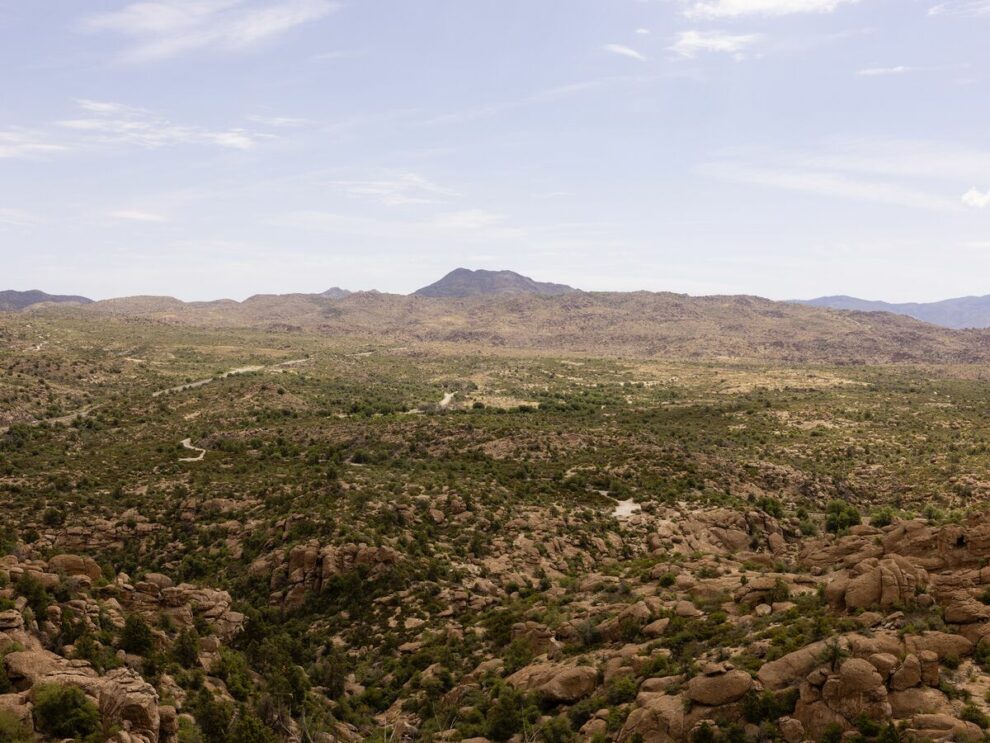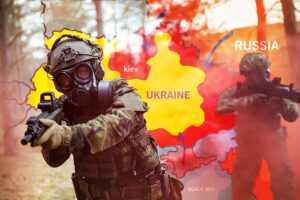Oak Flat, just a few miles outside of Superior, Arizona, is a desert landscape that is, at least for now, devoid of construction.
Earlier this month, the federal government put a pause on the building of the planned Resolution Copper mine, the latest in a decade-long series of delays. It comes after the U.S Forest Service told a 9th Circuit Court they didn’t have a concrete timeline on when the site’s Environmental Impact Statement (EIS) could be properly authored. That report was initially approved by former president Donald Trump before Joe Biden authorized its retraction in 2021, who has said he would use the delays to help find a solution.
Resolution Copper’s acquiring of the land was agreed upon in 2014 by then-senator John McCain, who included the deal as a last-minute rider in the National Defense Authorization Act. Section 3003 transferred around 5,300 acres of land to the U.S. valued at around $7 million as of 2019. Resolution Copper, and their parent companies, Rio Tinto and BHP, got roughly half the number of acres, Oak Flat included, but whose copper deposits boosted their value to around $112 billion.
On their website, Resolution Copper said the mine would significantly boost Arizona’s economy, citing extensive job creation and supplying an estimated 25% of U.S copper exports, which are needed for manufacturing everything from cellphones to MRI machines. But for environmental advocates, the cost would be significantly more extreme.
Henry Muñoz, former Superior city councilman and a fifth-generation Superior miner, clarifies he isn’t against mining, but is opposed to Resolution Copper’s process of block caving. That process essentially weakens large ore deposits, creating subsidence that collapses in on itself and the ground above.
“It’s going to leave a crater approximately 1.5 miles wide and a thousand feet deep. If you want to compare that to [Flagstaff’s] Meteor Crater, this crater is twice as big,” Muñoz said.
Also of concern is the amount of water the mine would use. A 2021 study from hydrologist, Dr. James Wells indicated the mine would use around 250 billion gallons of water over its lifetime, roughly enough to supply a city the size of Surprise for 40 years. Dr. Wells’ study suggests that water would come from new wells dug in the East Salt River Valley and would have to utilize 1/5 of SRP’s power capacity to pump out.
“The main issue is the destruction of our water. You’re potentially putting a strain on your water aquifers; you have an enormous energy cost and have to consider that there’s not going to be enough water to support these people,” Muñoz said.
For activists like former San Carlos Apache chairman, Wendsler Nosie Sr., legal and religious freedom is equally at risk. Oak Flat, otherwise known as Chéchʼil Bił Dahoteel, is a sacred site to the thousands of Arizonans of Apache descent, important for religious and coming-of-age ceremonies.
“I use the example of Mount Sinai, no different than when the Bible was written and those events. Oak Flat has angels that reside in this area, but also it’s the identity of our people, our religion, these are holy places,” Nosie said.
Nosie said there’s a clear connection between the concerns of indigenous people and the security of not just Apache land, but other tribes facing similar land disputes.
“They’re going to destroy the people’s first religion which involves the Constitution of the United States, and the United States and Resolution Copper know that. There’s a lot at stake and that’s why it’s so important that they’re not exempt from these laws,” he said.
The U.S. Forest Service will re-examine the report and will have to give at least 60 days’ notice before it gets published. Muñoz says the construction delays have opened a lot of eyes to the issue, but there’s still work to be done.
“Why do we have to destroy this sensitive area? It’s listed as a sacred place, the San Carlos Apache are fighting the religious angle, but there’s still copper left everywhere, it doesn’t have to be what it is, which is a failed experiment.”
Source: KTAR News
















